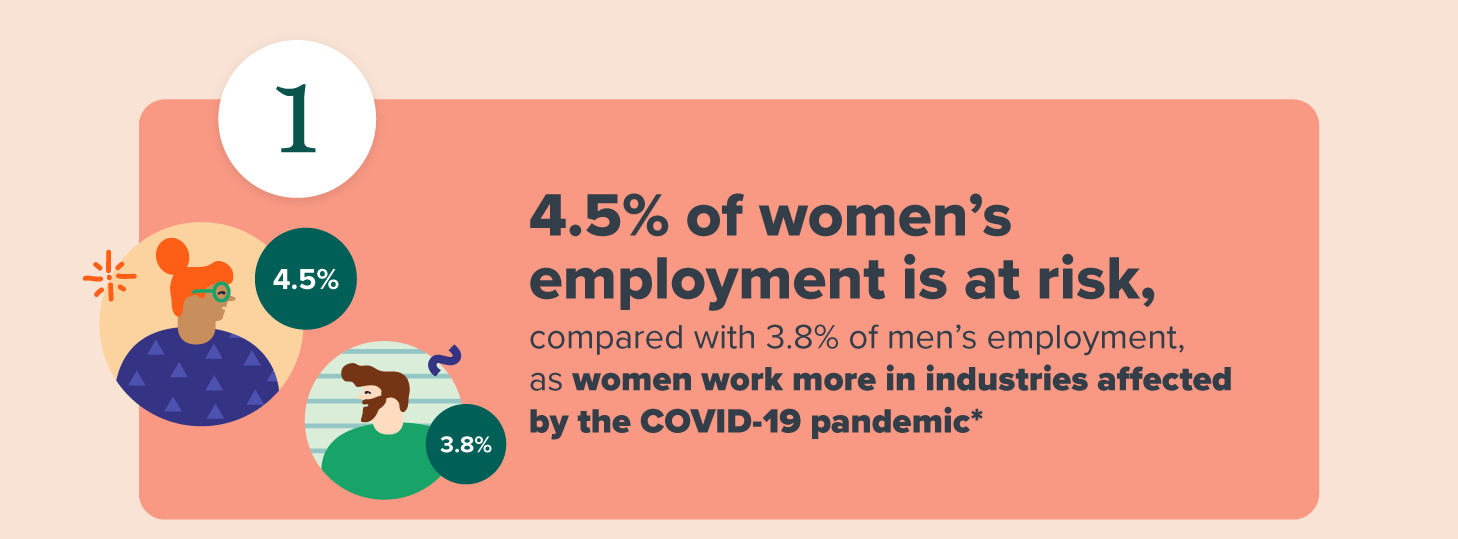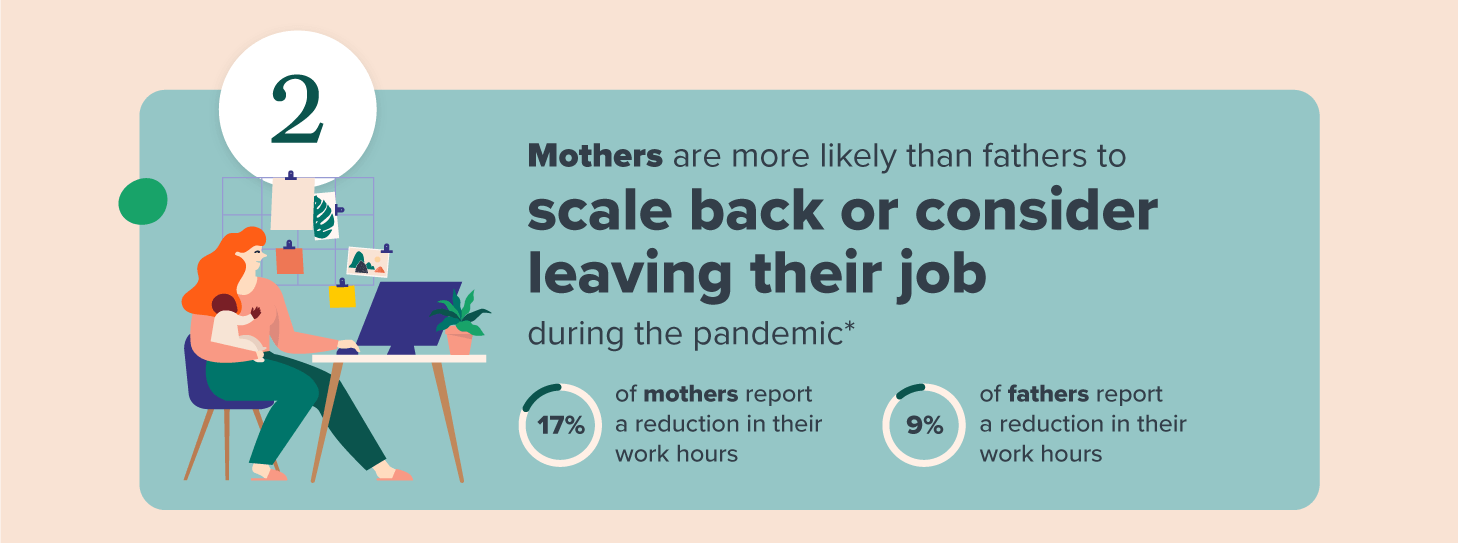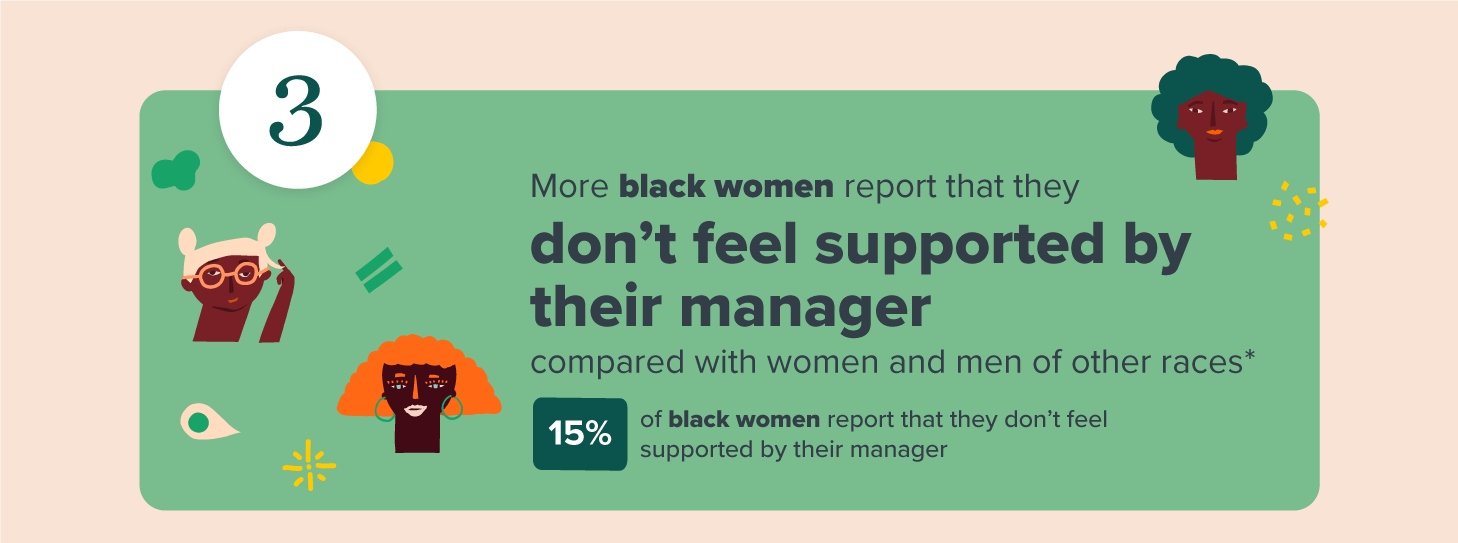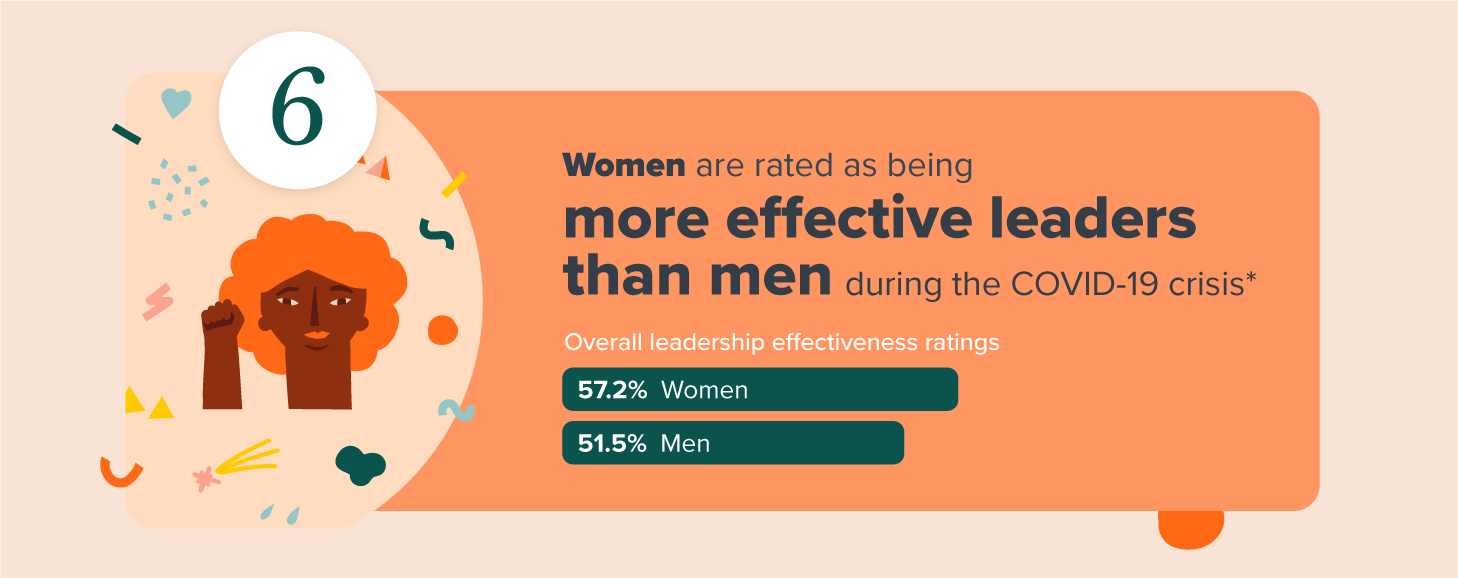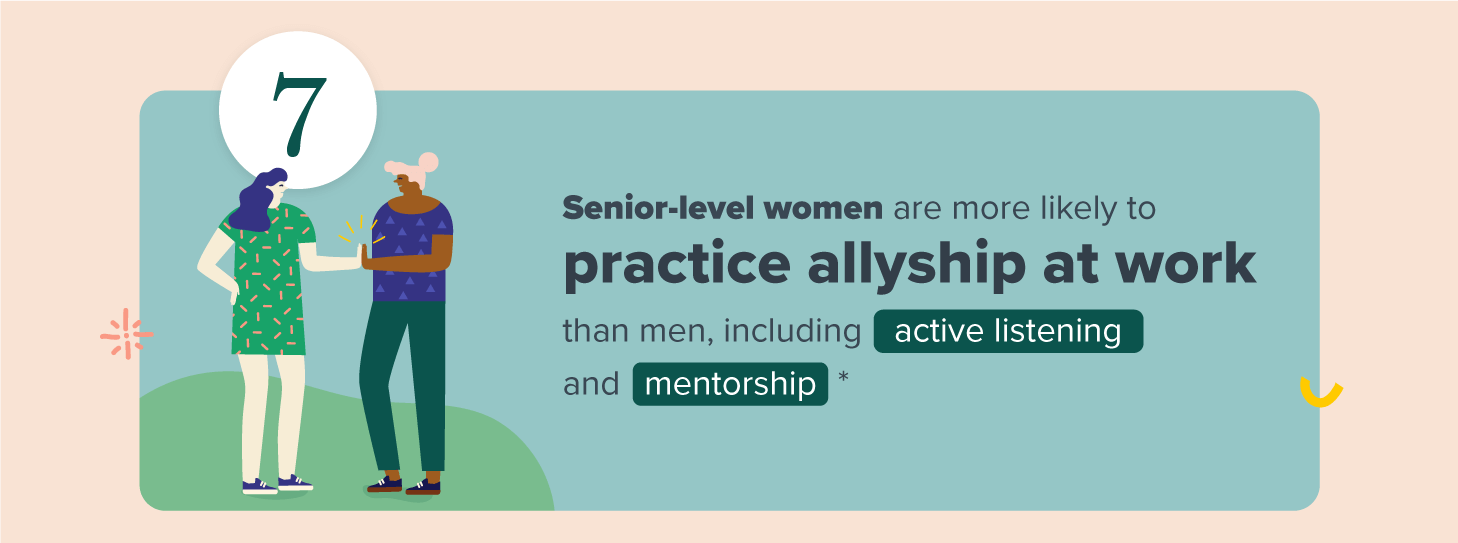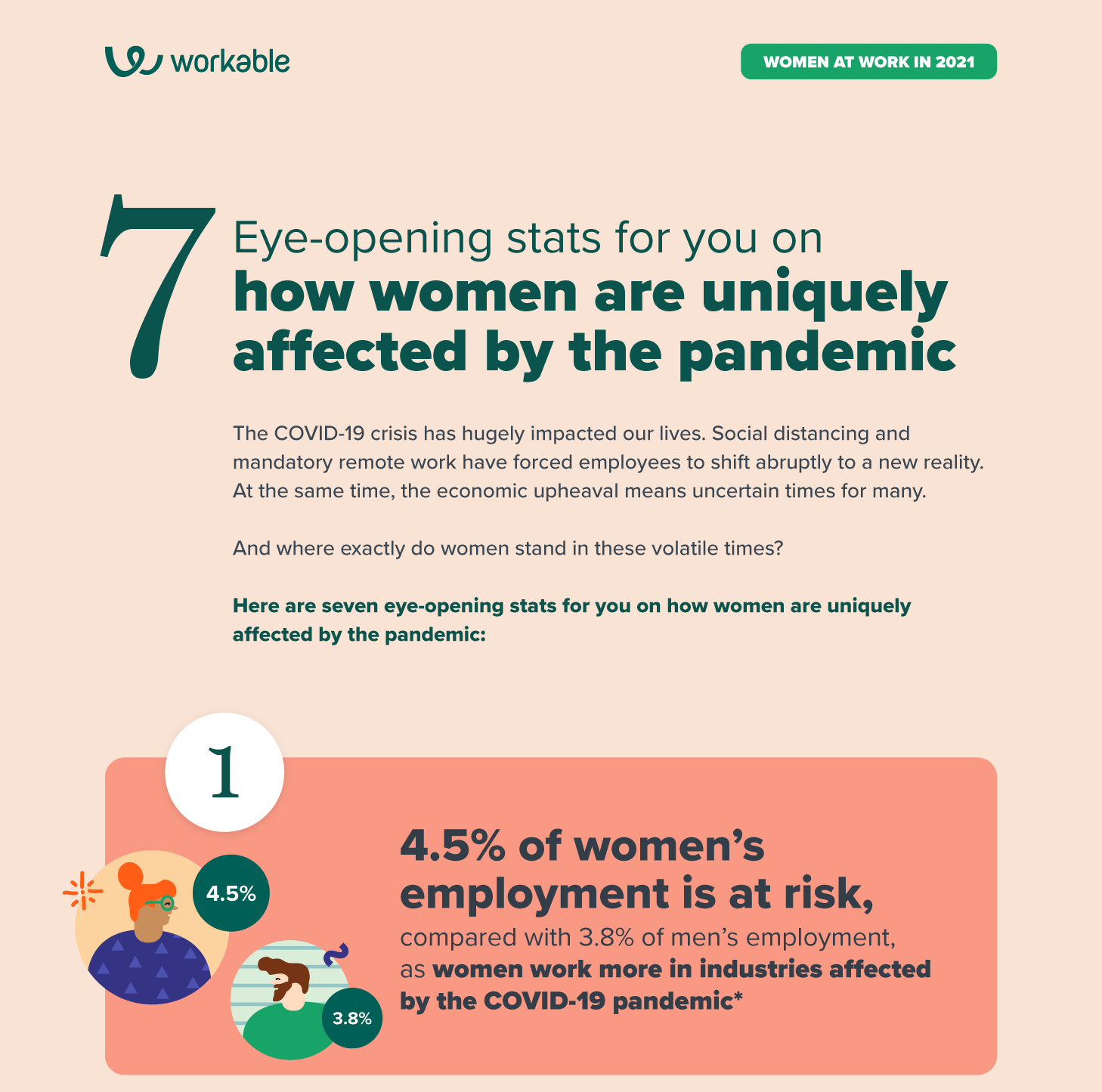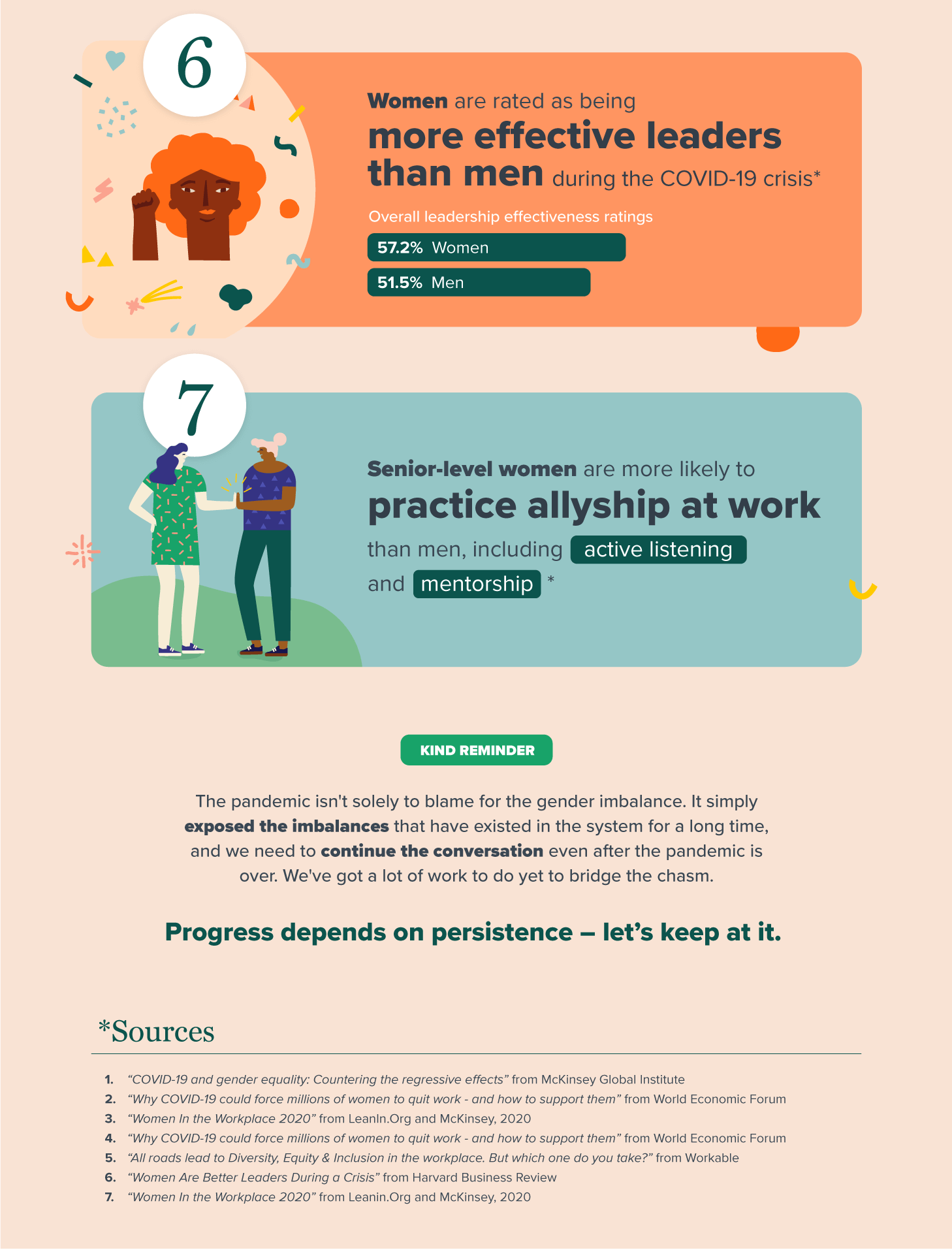Gender and COVID-19: 7 stats on women at work in 2021
The COVID-19 crisis has hugely impacted our lives. Social distancing and mandatory remote work have forced employees to shift abruptly to a new reality. At the same time, the economic upheaval means uncertain times for many.

And where exactly do women stand in these volatile times? Turns out, there’s been a significant regression in gender equality during the pandemic.
7 stats on gender and COVID-19
Here are seven eye-opening stats for you on how women have are uniquely affected, shedding light on COVID-19 and its impact on gender equality.
Jump to the full infographic – or download it for yourself here.
1. Unbalanced scales
4.5% of women’s employment is at risk, compared with 3.8% of men’s employment according to McKinsey – as women work more in industries affected by the COVID-19 pandemic.
2. A mother’s burden
Mothers are more likely than fathers to scale back or consider leaving their job during the pandemic, the World Economic Forum reports. They found that 17% of mothers reported a reduction in their work hours, compared with just 9% of fathers who reported the same.
3. Where’s the support?
More black women report that they don’t feel supported by their manager, compared with women and men of other races. According to a report collaboration from McKinsey and LeanIn.org, 15% of black women reported that they don’t feel supported by their manager at work.
4. Burning the candle at both ends
Women in senior-level positions report higher levels of exhaustion and burnout than men, with 54% vs. 41% citing exhaustion and 39% vs. 29% citing burnout according to the World Economic Forum. This is likely due to a greater stress at both ends of the work-life balance as a consequence of the pandemic.
5. A matter of importance
According to Workable’s survey on Diversity, Equity and Inclusion in the workplace, 96.6% of women state that DEI in the workplace is important to them.
6. Strong leadership
The Harvard Business Review reported that women are rated as being more effective leaders than men during the COVID-19 crisis, with 57.2% of respondents in a survey saying women ranked positively in overall leadership effectiveness ratings, compared with 51.5% for men.
7. … and maybe this is why
Senior-level women are more likely than men to practice allyship at work, including active listening and mentorship according to McKinsey and LeanIn.org.
Important reminder: the pandemic isn’t solely to blame for the gender imbalance. It simply exposed the imbalances that have existed in the system for a long time, and we need to continue the conversation even after the pandemic is over.
We’ve got a lot of work to do yet to bridge the chasm – and it goes far beyond gender and COVID.
Progress depends on persistence – let’s keep at it.
Related content:
Gender inequality in the workplace: A lack of women in leadership

